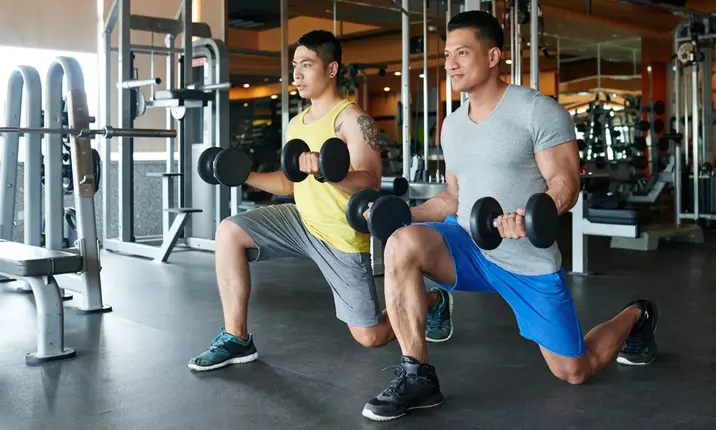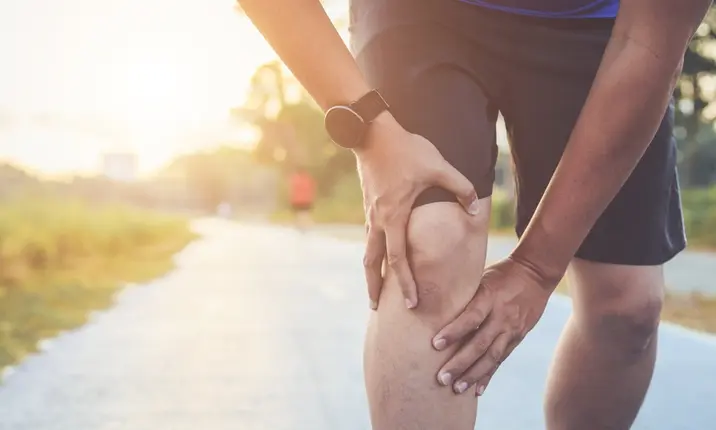"The enrolment numbers for the annual Singapore Marathon, as well as other mass participation sporting events, have been steadily rising over the last few years," says Dr Lim Lian Arn, orthopaedic surgeon at Gleneagles Hospital.
"This is probably due to a growing awareness of the benefits of regular exercise, the increasing number of these events, and the show of encouragement by friends and family. The upside to this is that regular exercise is great for your health. The downside is that orthopaedic doctors are seeing more and more activity-related injuries."
Dr Lim thinks the pros of exercise far outweigh the cons, but he has a few suggestions to minimise injuries when you're training and running a marathon.
1. Improve your overall fitness before you start running
Avoiding injuries is all about proper preparation, constant review and early management. So, if this is your very first marathon, you can't just dive in at the deep end.
"You need to have the right fitness levels before you begin running long distances," says Dr Lim.
This means building strong muscles, ligaments and tendons so you can run further without compromising your form. When you're tired, you're more likely to move your body in awkward ways, or overwork certain muscles to compensate for weaker ones. This can lead to common injuries like runner's knee (pain in the knee joint from injured tendons or cartilage), Achilles tendinopathy (pain in the back of the leg, near the heel), shin splints (pain in your shins) or even a stress fracture (a small crack in the bone).
Adding strength training to your training routine is a way to gain strength while also improving your form and ensuring a consistent, steady gait when you run. If you need a helping hand, you can start by consulting a personal trainer or joining a reputable fitness class.
You should also think about how long to run for when you begin training. A general guide is to run about 20 minutes every other day, gradually increasing to about 5 minutes every 14 days. This can help you to ease into the routine and reduce your risk of an overuse injury or sudden injury like a fracture.
2. Think about your form
Just like with any sport, there are right and wrong ways to run. Maintaining good posture and taking proper strides are the 2 best ways to avoid common injuries.
"Poor posture can put additional stress on your back and knees," says Dr Lim. "These areas are particular prone to injuries, from general wear and tear to dislocations and fractures."
To treat more serious cases, common surgeries include ligament reconstruction and tear repair in the knee, and rotator cuff (tendon) repair in the shoulder.
3. Listen to your body
"Feel like something's wrong? You should trust your instincts," says Dr Lim.
"Don't just hope that your aches and pains will resolve themselves. If the pain is persistent, you should always go and see your doctor."
"The majority of injuries can be managed with rest and anti-inflammatory medication. However, if your injury is from overuse, your doctor may want to check for any limb misalignments (which can put pressure on other areas of the body) as well as discuss your technique, equipment and running schedule, so they can help you to avoid further problems in the future.”
The most important thing is that you constantly review your own activities on a regular basis, address any niggles or aches early, and take it slow. The field of sports science and orthopaedics is evolving, and researchers are exploring revolutionary treatments like stem cell injections for soft tissue and cartilage recovery, but the reality is that serious injuries often need ongoing care and even surgery in order to resolve them.
4. Get a good pair of running shoes
Shoes are probably the most important piece of attire you'll wear when you run. There is much debate about minimalist shoes and how they compare to maximally-cushioned shoes and shoes with and without pronation control. The right type of shoes depends on the alignment of your foot and ankle, your style of running, and possibly your body weight.
If you're not a very light person, it may not be a good idea to wear minimalist shoes. If you're a heel striker, you'll likely remain as one even if you try hard to change your running pattern. So, it might be best to get shoes with well-cushioned heels. If you're an overpronator, (where your foot habitually rolls inwards too much after it has hit the ground) you might need shoes to correct that.
There are shoe stores with sales professionals and in-house treadmills to help evaluate your gait, and to find the most appropriate footwear for you.
Some guidelines for choosing running shoes:
Make sure they're not too small. When you stand in them with your usual running socks, the tip of your toes should be about a thumb's breadth from the front end of the shoe. Your shoes should not be too narrow and cause your feet to feel tight when you walk in them. Conversely, they should not be too wide and cause the feeling of your feet sliding around inside the shoes.














